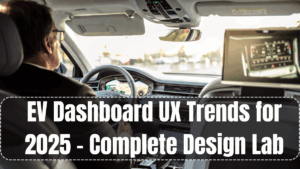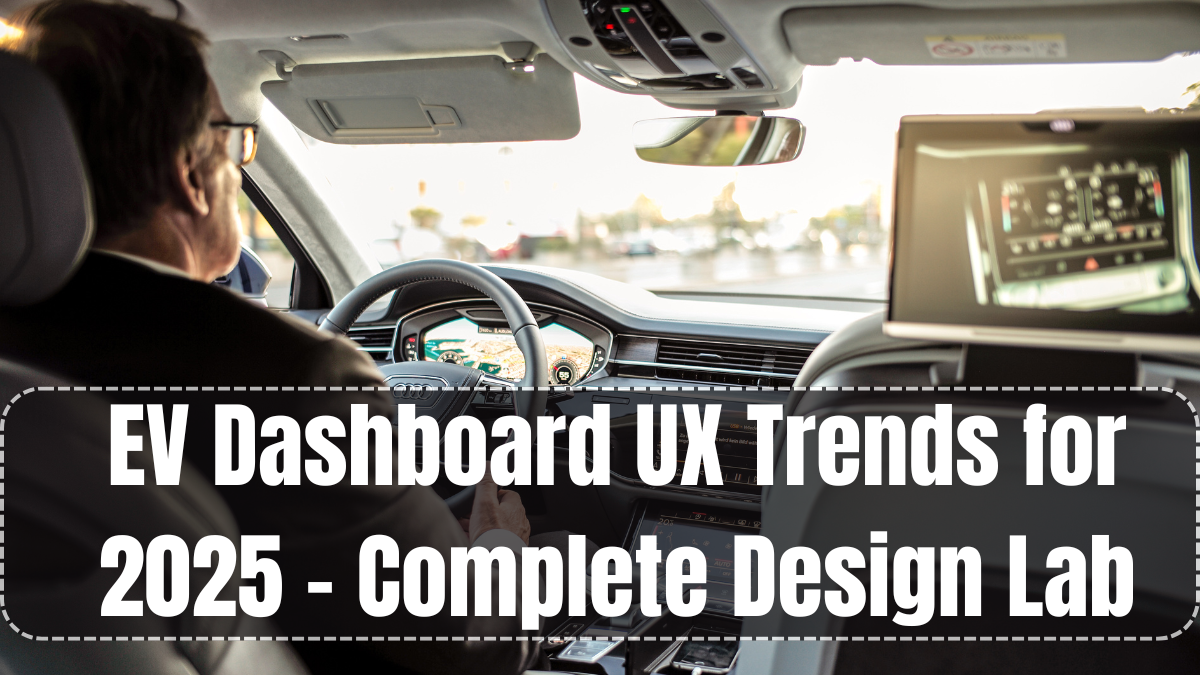With electric vehicles rapidly becoming the standard, EV Dashboard UX 2025 has become a key area of innovation across the automotive industry. Car interiors are no longer just about comfort—they’re about seamless connectivity, intuitive controls, and immersive digital experiences. The dashboard, once a cluster of analog meters and mechanical buttons, now serves as the control hub for everything from navigation to entertainment and even voice commands.

Digital Dashboards Are the New Norm
The most defining shift in EV Dashboard UX 2025 is the complete transition to digital displays. Traditional physical dials are replaced with high-resolution, customizable screens that show real-time data based on the driver’s preferences. These displays typically include speed, battery range, route maps, media controls, and driving behavior stats—all integrated into a single sleek panel.
Many brands now offer panoramic dashboards that stretch from the driver to the passenger side. For instance:
-
Tesla’s Model S Plaid features a central touchscreen with minimal physical controls
-
Mercedes-Benz EQS offers a “Hyperscreen” that combines three displays behind a single glass pane
-
Hyundai Ioniq 6 blends instrument clusters with infotainment screens in a curved setup
This full-digital interface has redefined how users interact with their vehicles.
Voice and Gesture Controls Enhance Interaction
One of the most exciting features in EV Dashboard UX 2025 is the rise of touchless control systems. Voice commands are now smarter and more context-aware, allowing drivers to ask for weather updates, play music, or navigate without taking their hands off the wheel. Brands are also experimenting with gesture controls to adjust volume, accept calls, or switch driving modes.
These interactions make driving safer by reducing visual and manual distractions. Some premium EVs now feature AI assistants that learn and adapt to your routines—like warming the cabin when it’s cold or pulling up navigation for your regular commute.
Minimalist Design with Maximum Functionality
Minimalism continues to influence every aspect of EV Dashboard UX 2025. Automakers are removing physical clutter, replacing rows of buttons with a few essential, multi-functional touchpoints. Most dashboards are built using flush surfaces, ambient LED trims, and hidden compartments to maintain a clean and futuristic look.
Common minimalist elements include:
-
Floating center displays
-
Flush-fit air vents
-
Context-sensitive control panels that only appear when needed
-
Matte-finished screens with anti-reflective coating
This design approach not only modernizes the interior but also makes the dashboard more adaptable for future updates and features.
Adaptive Interfaces and Personalized Layouts
Personalization is central to EV Dashboard UX 2025. Drivers can now customize their dashboard layouts—choosing what information is shown, in what style, and where. Day/night themes automatically adjust the brightness and contrast to reduce eye strain. Additionally, driver profiles can save preferred display settings, media playlists, climate preferences, and seat positions.
Key adaptive features include:
-
Dynamic widgets for weather, battery usage, or traffic alerts
-
Profile-linked preferences via smartphone pairing
-
Real-time updates and Over-the-Air (OTA) feature installations
-
Integration with home assistants and apps like Google Maps, Spotify, or Apple Calendar
All of this is tailored to enhance user convenience and driving satisfaction.
Safety Features Embedded into the UI
Modern dashboards are not just informative—they’re proactive safety tools. EV Dashboard UX 2025 integrates real-time safety alerts, blind-spot visuals, and lane departure warnings directly into the display. This ensures the driver’s attention stays forward rather than shifting across separate devices.
Common embedded safety elements:
-
Eye-tracking systems to detect drowsiness
-
Visual display of surrounding traffic using 360° cameras
-
Pop-up alerts for nearby pedestrians or cyclists
-
AR (Augmented Reality) overlays showing turn-by-turn directions on windshields
This integration of safety into the dashboard UI reduces cognitive load while driving and improves reaction times.
Eco-Conscious Design and Materials
Sustainability plays a role in the physical build of dashboards as well. Many companies are using recycled plastics, vegan leather, and bamboo trims in dashboard construction. Additionally, some interfaces promote eco-driving habits by displaying real-time emissions savings, battery usage efficiency, and regenerative braking statistics.
This shift reflects the growing demand for greener vehicles that are not only energy-efficient but also built using responsible materials. Brands like Polestar, Tata, and Rivian are already ahead in offering eco-friendly interior trims that support this trend.
Industry Leaders Defining EV Dashboard UX 2025
A few standout vehicles and concepts in 2025 that showcase cutting-edge EV Dashboard UX 2025 include:
| Model | UX Innovation Highlight |
|---|---|
| Tesla Model S Plaid | Central command touchscreen with AI personalization |
| Mercedes-Benz EQS | Hyperscreen with predictive navigation and media control |
| Hyundai Ioniq 6 | Dual-display cockpit with ambient UI feedback |
| Tata Avinya Concept | Voice-first, screen-free driving interface |
| Polestar 3 | Sustainable materials with dynamic digital clusters |
These models are setting benchmarks for what drivers expect in the evolving EV landscape.
FAQs
What makes EV dashboard UX in 2025 different from previous years?
EV Dashboard UX 2025 focuses on full digital integration, personalized layouts, minimal design, and AI-powered interactions—all designed to enhance safety, convenience, and visual appeal.
Which car brands offer the best EV dashboard UX in 2025?
Top brands include Tesla, Mercedes-Benz, Hyundai, Polestar, and Tata Motors, all of which offer high-tech, driver-friendly dashboards with advanced display features.
Are physical buttons completely gone in 2025 EV dashboards?
While most dashboards minimize physical buttons, a few essential controls like hazard lights or volume knobs remain for safety. The majority of controls have shifted to touch, voice, or gesture interfaces.
How does EV dashboard UX improve driving safety?
Dashboards now include real-time alerts, AR navigation, eye-tracking for drowsiness, blind spot displays, and predictive assistance—making driving safer and more responsive.
Is EV dashboard design eco-friendly in 2025?
Yes, many automakers are using recycled materials, plant-based surfaces, and energy-saving displays to ensure dashboards match the sustainability goals of EV production.
Click here to know more.
